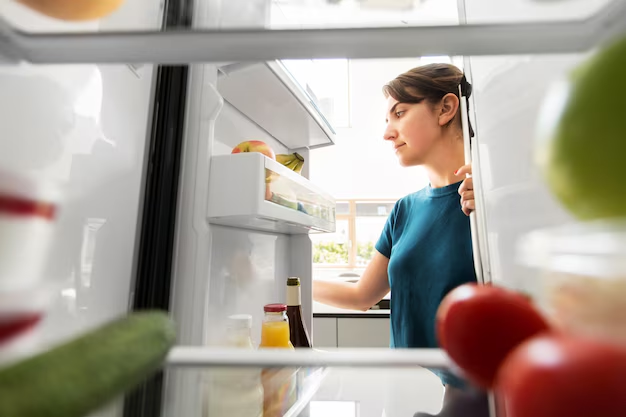Finding the Ideal Refrigerator Temperature: A Comprehensive Guide
Have you ever reached into your refrigerator only to find that your milk has soured or your lettuce has wilted far sooner than expected? You’re not alone. Many people struggle with maintaining the ideal temperature in their refrigerators, leading to food spoilage and waste. So, what is the correct refrigerator temperature to ensure your food remains fresh, safe, and tasty? Let’s dive into the nuances of refrigerator temperature and why it’s important to get it just right.
Why Refrigerator Temperature Matters
Temperature plays a crucial role in food preservation. Setting your refrigerator temperature too high can lead to quick spoilage and potential foodborne illnesses, while an overly low temperature can lead to partly frozen foods and fridge burn.
Food Safety
The main goal of setting your refrigerator temperature correctly is to keep food safe from harmful bacteria that thrive in warmer conditions. The FDA recommends keeping your refrigerator at or below 40°F (about 4°C) to prevent bacterial growth.
Food Quality
Beyond safety, the right temperature also impacts the quality and longevity of your food. Certain foods perform best under specific conditions, and adjusting your fridge’s temperature settings can help you maintain the best taste and texture of your perishables.
Energy Efficiency
Using the correct refrigerator temperature can also save on energy costs. If your fridge is too cold, it uses more power than necessary, which might increase your energy bills.
Setting the Right Temperature
How can you ensure you’re setting your refrigerator temperature correctly? Here’s a simple guide to help you find the ideal settings for both safety and efficiency.
Recommended Temperature Settings
- Refrigerator: Aim to keep your main refrigerator compartment at or below 40°F (4°C).
- Freezer: The ideal freezer temperature should be 0°F (-18°C) to ensure your frozen items remain rock-solid.
Adjusting Your Fridge Temperature
Modern refrigerators typically come with a digital temperature readout or a dial control for setting temperatures. Here’s how to adjust most standard models:
- Locate the Control Panel: Usually found on the side or back interior wall of the refrigerator.
- Set the Temperature: Using the dial or digital panel, adjust to the desired setting. Remember that slight adjustments can make a big difference in overall temperature.
- Check Temperature Regularly: It’s advisable to use an appliance thermometer to verify the actual temperature inside your fridge and freezer, as the built-in display might not always match the interior climate.
Monitoring Temperature Fluctuations
Temperature fluctuations in your refrigerator can occur due to frequent door openings, overstuffing the fridge, or heat from surrounding appliances. To maintain a stable temperature:
- Limit Door Opening: Try to plan what you need before opening the fridge to minimize loss of cool air.
- Avoid Overloading: Make sure there’s enough space for air to circulate, which helps in maintaining a stable temperature.
- Place Fridge Wisely: Ensure the unit is placed away from direct heat sources like sunlight or ovens.
Factors Influencing Refrigerator Temperature
Understanding what can affect your fridge’s temperature helps you maintain optimal conditions.
Ambient Temperature
Your kitchen’s ambient temperature can have a significant impact on your refrigerator’s performance. During hotter months, you may need to adjust settings slightly cooler to compensate for efficiency loss.
Refrigerator Age and Maintenance
Older models or poorly maintained refrigerators may struggle to maintain a consistent temperature. Consider regular maintenance checks and cleaning coils for better efficiency.
Frequent Opening
How often the fridge is opened also plays a role. In busy homes, frequent opening and closing can make it more challenging to maintain a steady temperature.
Tips for Optimal Food Storage
Now that you understand the correct temperature settings, let’s explore how proper organization can also help keep your food fresh.
Organize Shelves Wisely
Different parts of the fridge cater better to certain items due to slight temperature variations:
- Upper Shelves: Ideal for ready-to-eat foods like leftovers and drinks.
- Lower Shelves: Best for raw ingredients, like meats or dairy products, as this is typically the coldest section.
- Refrigerator Door: Store condiments here, as it’s the warmest section and less suitable for perishable items.
Different Zones for Different Foods
- Crisper Drawers: These are designed for storing fruits and vegetables at ideal humidity levels — separate high-humidity for leafy greens and low-humidity for fruits.
- Dairy Compartment: If your fridge has one, use it for butter, cheese, and yogurt.
Handling Temperature Problems
No appliance is without fault. If you encounter issues with your refrigerator temperature, here are some practical steps:
Troubleshooting Common Issues
- Inconsistent Temperature: Check the door seal; improper sealing can let cool air escape.
- Frost Buildup: This could indicate a defrost issue. Ensure vents aren’t blocked by items stacked in front of them.
- Odd Noises: These can indicate problems with the internal cooling mechanism.
When to Call a Professional
If simple troubleshooting doesn’t resolve the issue, or if you notice persistent problems with temperature settings, it might be time to consult a professional for repairs.
Summary of Key Tips for Refrigerator Temperature 📝
- Maintain at or below 40°F (4°C) for safety.
- Regularly monitor with a thermometer.
- Avoid overloading to ensure proper air circulation.
- Position fridge away from heat sources.
- Organize smartly: Different sections suit different types of foods.
- Consider ambient factors like room temperature and appliance age.
- Troubleshoot regularly or call in professional help as needed.
Keeping your refrigerator at the correct temperature is not just about avoiding food wastage. It’s about ensuring the safety and quality of the foods you consume daily. With these strategies at your disposal, you can set your refrigerator confidently for optimal performance. Remember, a little attention to temperature details goes a long way in promoting better food storage and energy efficiency.
